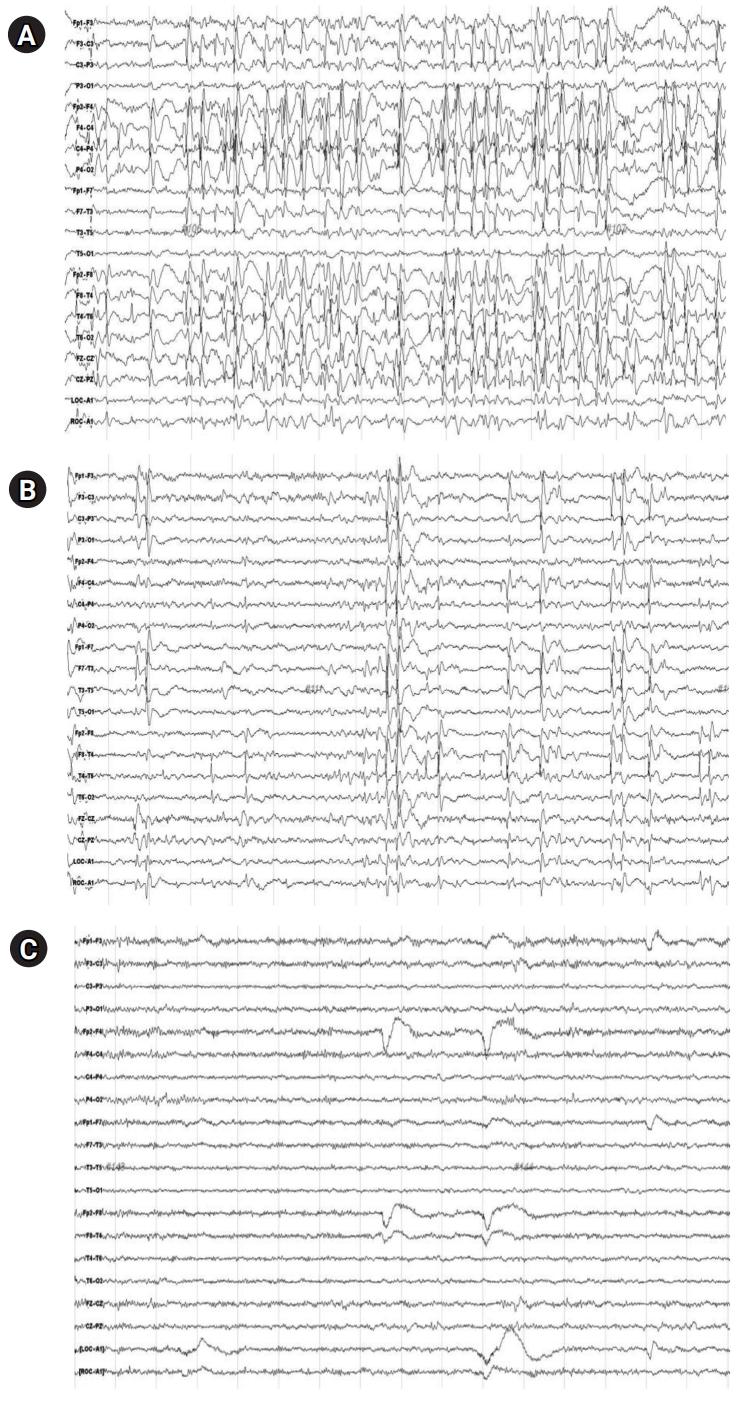 |
 |
- Search
| Ann Child Neurol > Volume 30(4); 2022 > Article |
|
Abstract
Purpose
Methods
Results
Conflicts of interest
Hoon-Chul Kang is an associate editor, Heung Dong Kim, Joon Soo Lee and Se Hee Kim are editorial board members of the journal, but They was not involved in the peer reviewer selection, evaluation, or decision process of this article. No other potential conflicts of interest relevant to this article were reported.
Notes
Author contribution
Conceptualization: JSL and HCK. Data curation: NT. Formal analysis: DY and HDK. Funding acquisition: HCK. Methodology: HDK, JSL, and HCK. Project administration: HCK. Visualization: DY and SHK. Writing-original draft: NT. Writing-review & editing: DY, SHK, and HCK.
Acknowledgments
Fig.┬Ā1.

Table┬Ā1.
| Variable | Total (n=21) |
|---|---|
| Male sex | 14 (66.7) |
| Age at diagnosis (yr) | 5.3 (4.1-6.6) |
| Seizure type | |
| ŌĆāFocal impaired awareness | 12 (57.1) |
| ŌĆāGeneralized tonic-clonic | 9 (42.9) |
| Age at seizure onset (yr) | 3.7 (2.9-4.2) |
| Development | |
| ŌĆāNormal | 11 (52.3) |
| ŌĆāDelayed | 10 (47.6) |
| ŌĆāŌĆāMild | 4/10 (40.0) |
| ŌĆāŌĆāModerate to severe | 6/10 (60.0) |
| Age at developmental delay onset (yr)a | 2.8 (1.0-4.5) |
| Brain MRI | |
| ŌĆāNormal | 17 (81.0) |
| ŌĆāAbnormal | 4 (19.0) |
| Pathogenic variant in diagnostic exome sequencing | 0/16 |
| Underlying disease | |
| ŌĆāNone | 20 (95.2) |
| ŌĆāNeonatal cerebral hemorrhage | 1 (4.8) |
| Number of treatmentsb | 4.2 (3.0-5.0) |
Table┬Ā2.
| Treatment | Total (n=21) | EEG improvement | Seizure improvement | Cognitive improvement |
|---|---|---|---|---|
| Anti-seizure medication | ||||
| ŌĆāVPA | 16 (76.1) | 10 (62.5) | 9 (56.3) | 10 (62.5) |
| ŌĆāLEV | 12 (57.1) | 5 (41.7) | 4 (33.3) | 5 (41.7) |
| ŌĆāTPM | 4 (19.0) | 1 (25.0) | 2 (50.0) | 1 (25.0) |
| ŌĆāCLB | 4 (19.0) | 2 (50.0) | 2 (50.0) | 0 |
| ŌĆāZNS | 2 (9.5) | 0 | 0 | 0 |
| ŌĆāLCM | 1 (4.8) | 0 | 0 | 0 |
| ŌĆāLMT | 1 (4.8) | 1 (100.0) | 1 (100.0) | 1 (100.0) |
| ŌĆāPRP | 1 (4.8) | 0 | 0 | 0 |
| ŌĆāCBZ | 1 (4.8) | 0 | 0 | 0 |
| ŌĆāVGB | 1 (4.8) | 1 (100.0) | 1 (100.0) | 0 |
| ŌĆāPB | 1 (4.8) | 1 (100.0) | 1 (100.0) | 1 (100.0) |
| Long-term, high-dose steroid | 14 (66.7) | 10 (71.4) | 10 (71.4) | 8 (57.1) |
| Ketogenic diet | 10 (47.6) | 7 (70.0) | 7 (70.0) | 8 (80.0) |
| Intravenous steroid pulse | 4 (19.0) | 3 (75.0) | 3 (75.0) | 3 (75.0) |
| IVIG | 1 (4.8) | 0 | 0 | 0 |
| Cannabidiol | 1 (4.8) | 1 (100.0) | NAa | 1 (100.0) |
Values are presented as number (%). Several treatments were applied to one patient. Improvement in EEG was defined as a more than 50% reduction of the spike-wave index.
EEG, electroencephalography; VPA, valproic acid; LEV, levetiracetam; TPM, topiramate; CLB, clobazam; ZNS, zonisamide; LCM, lacosamide; LMT, lamotrigine; PRP, perampanel; CBZ, carbamazepine; VGB, vigabatrin; PB, phenobarbital; IVIG, intravenous immunoglobulin; NA, not available.
Table┬Ā3.
| Side effects | Value |
|---|---|
| Steroid therapya | 18 |
| ŌĆāCushing face | 18 (100) |
| ŌĆāWeight gain | 18 (100) |
| ŌĆāIrritability | 12 (66.7) |
| ŌĆāLethargy | 5 (27.8) |
| ŌĆāHirsutism | 3 (16.7) |
| ŌĆāDiarrhea | 2 (11.1) |
| ŌĆāStomatitis | 1 (5.6) |
| Ketogenic diet | 10 |
| ŌĆāLethargy | 4 (40.0) |
| ŌĆāVomiting | 3 (30.0) |
| ŌĆāDiarrhea | 2 (20.0) |
| ŌĆāSevere metabolic acidosis | 2 (20.0) |
References
- TOOLS
-
METRICS

- Related articles in Ann Child Neurol
-
Clinical Spectrum of Posterior Reversible Encephalopathy Syndrome in Children2020 April;28(2)






